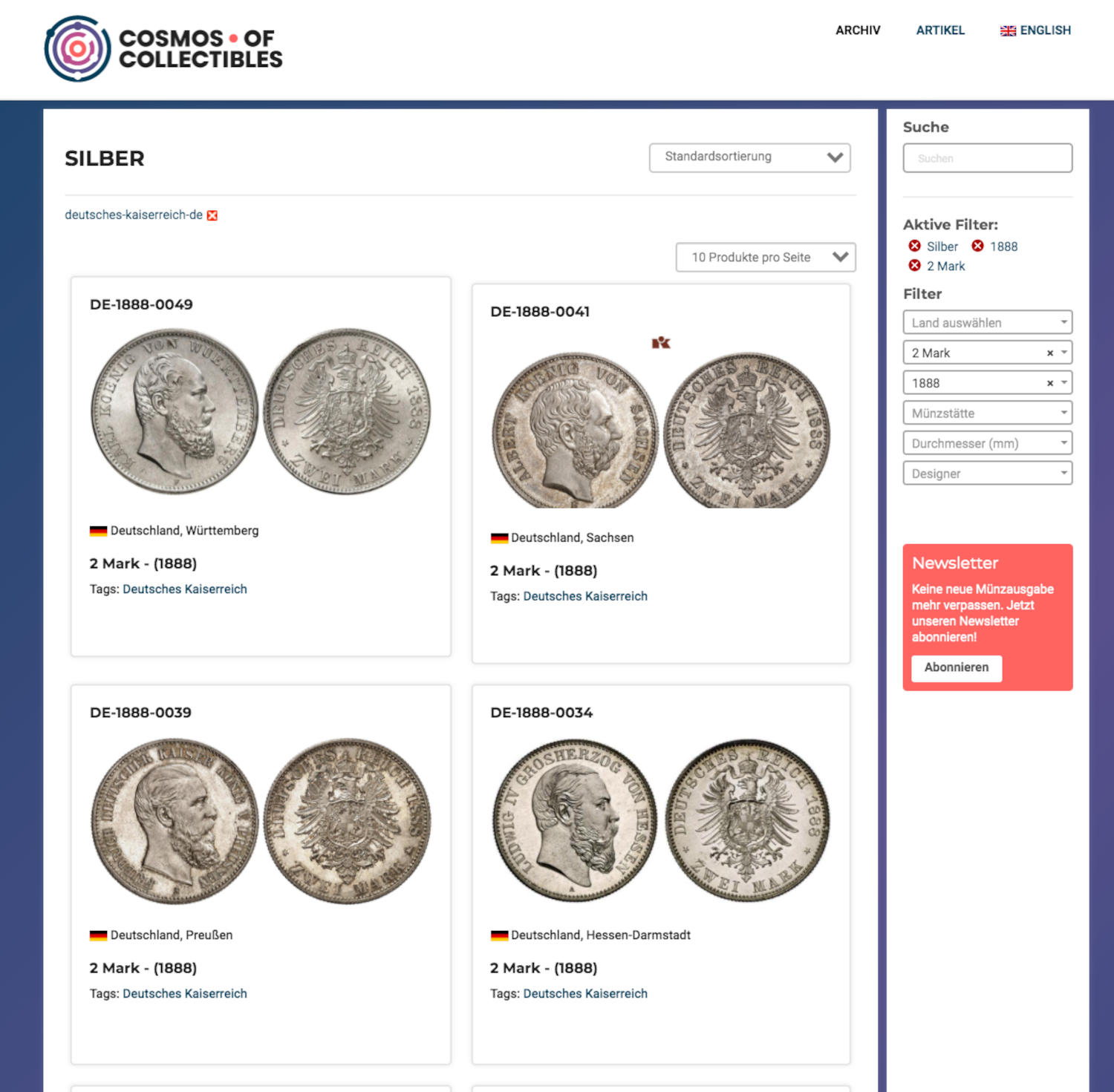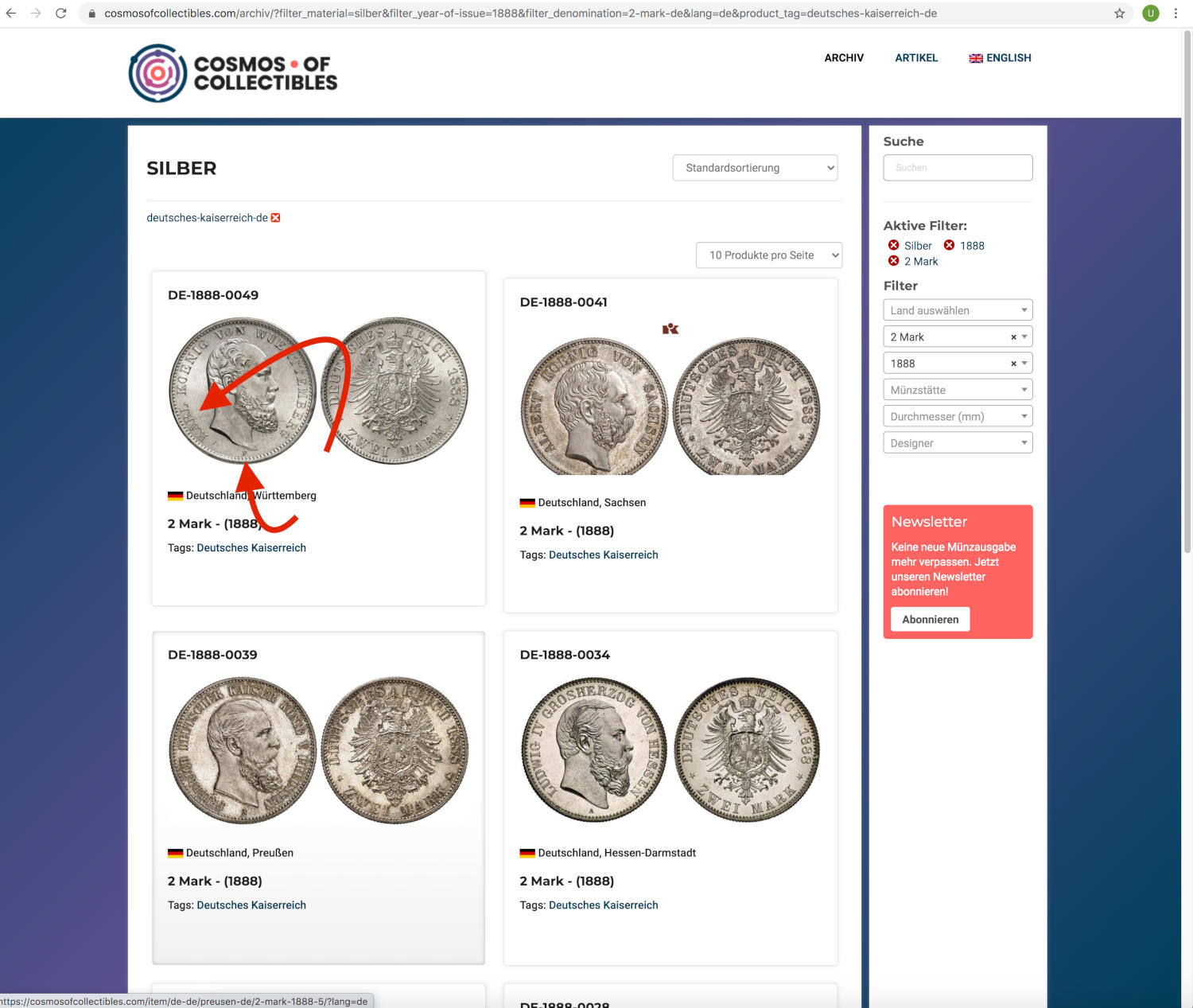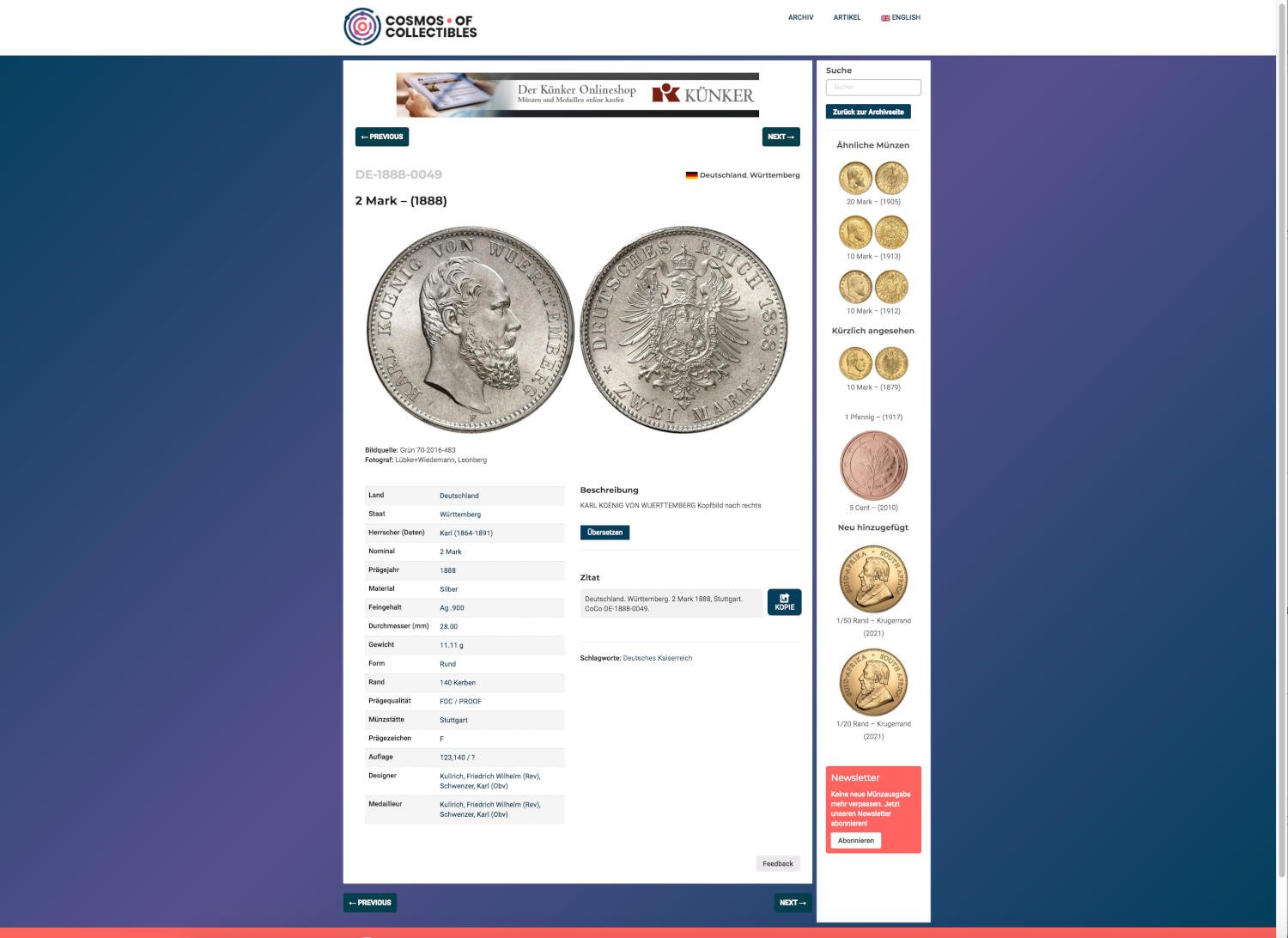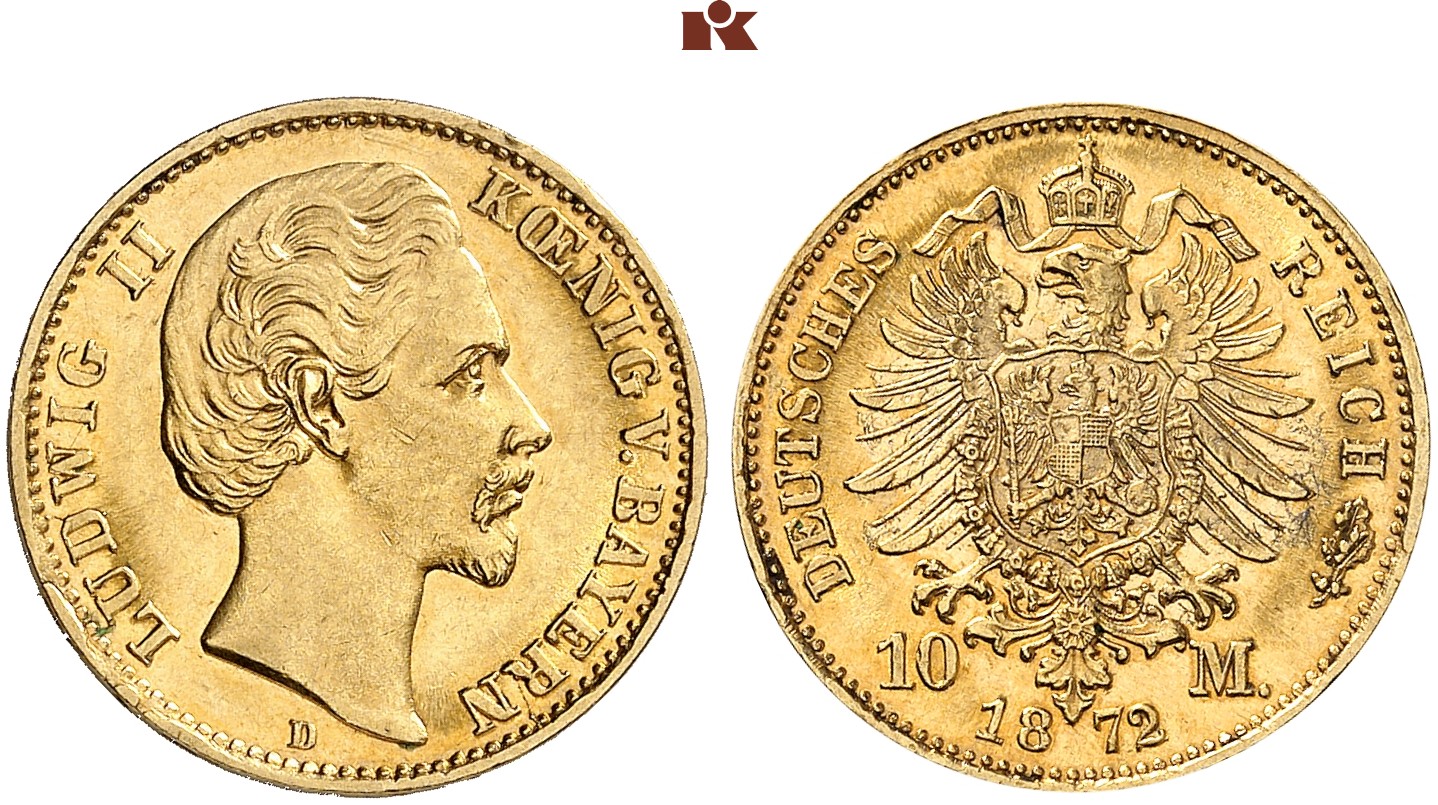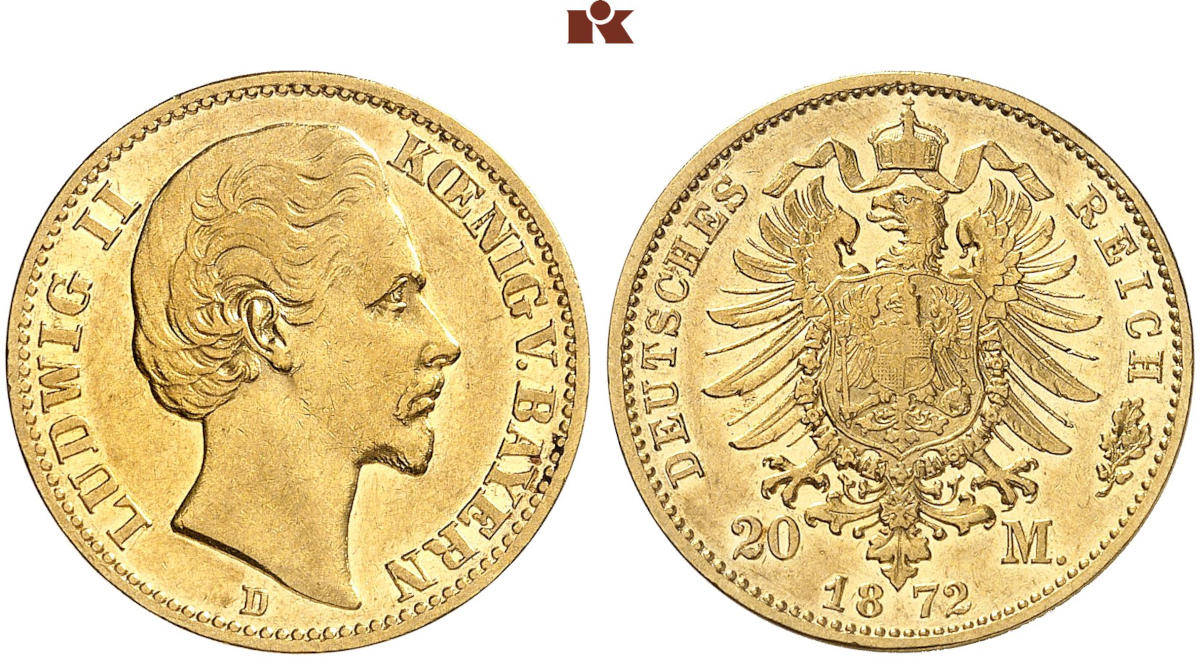This article was brought to you by auction house Künker, the specialist for coins of the German Empire.
Are you annoyed because Cosmos of Collectibles does not indicate prices? There’s a good reason for it: prices change all the time. And you are much more up-to-date if you determine the price yourself. You want to find out how much a coin of the German Empire is worth? In this article, we’ll explain you how to do that. From the coin to the price in four steps – it couldn’t be any easier.
Step 1: Identify Your Coin
To find out which coin is lying in front of you, you have to identify it. That’s a piece of cake thanks to the catalogue offered by Cosmos of Collectibles. Click on our “Deutsches Kaiserreich” section. At the right, you can determine filters, fill in the fields “Denomination”, “Year of Issue” and “Material”. Then you can compare the results with your coin. Pay attention to the mintmark and the legend to be sure you identified your coin correctly. The mintmark is the tiny letter that can usually be seen at the very bottom of the heads-side of gold and silver coins, on the tails-side in the case of smaller denominations.
At this point, you’ve already completed the most important step. If you click on the field, you know what coin you have.
Step 2: Determine the Quality
Now things get tricky – not because you wouldn’t be able to do what you have to do next. But there is the danger of being blinded by one’s own greed. So, be completely honest with yourself when examining your coin. This is the only way to come to a correct conclusion.
So, what does your coin look like? Quite beautiful? That isn’t enough. In numismatics, there are different terms to describe the quality of a piece, and we would like to illustrate them with an example. Take a close look at the four pieces: the first coin is “FDC”, the second one “extremely fine”, the third “very fine to extremely fine” and the fourth “very fine”.
The best way to determine the quality is to look at the small shield on the chest of the eagle. Feel free to use a magnifying glass. Another eagle with shield is depicted on it. And here’s the bitter truth: a coin is only “FDC” when this small shield is completely untouched. On an “FDC” coin, you can see every detail of the shield. On an “extremely fine” coin, parts of the shield are worn and no longer visible. On a “fine” coin – and this quality is rarely offered at auction, which is why we don’t have a picture of it – you can still see contours on the shield.
Determining the exact quality of a piece is crucial to find out its value.
Step 3: What’s the Mintage of the Coin and Does It Make Sense to Keep Looking?
Having determined the quality of the coin, we take another look at the website of Cosmos of Collectibles.
The most important field for the question of how much your coin is worth is the field indicating the mintage. After all, the mintage numbers of the coins of the German Empire vary a lot. There are coins of which several million pieces were minted. And if you see a mintage number of several millions, you can be sure that you coin isn’t a precious rarity. Regarding coins of smaller denomination, you can expect that dealers will not even want to buy the piece if it’s of poor quality. In the case of gold and silver coins, dealers will pay you its material value minus a fee for melting down the coin. To have an idea of what a dealer should offer you for the coins, be sure to calculate the material value of your gold and silver coins using the current precious metal price. A 1 mark piece contains 5g, a 2 marks piece 10g, a 3 marks piece 15g and a 5 marks piece 25g of silver. Gold coins of 5 marks contain 1.792g, coins of 10 marks 3.584g and coins of 20 marks 7.168g of gold.
The website goldcalc.com, for instance, offers a very easy-to-use gold calculator.
Step 4: And Here Comes Google
The prices of collector coins are like stocks, they rise and fall depending on how popular a certain field is at the moment, depending on how many people are currently collecting coins. That’s why it makes sense to use Google to find out what prices your coin is currently being offered for. Search the CoCo number first. That’s the easiest way. If that doesn’t help enter the coins “Country”, “Denomination”, “Year of Issue” and “Mintmark”.
To only get current results, we suggest limiting the Google search to the past month. To do this, enter your search, click enter and then filter by clicking on “Settings” and “Advanced search”. Use the third option under the heading “Then narrow your results by…” and change it from “anytime” to “past month”.
The results are absolutely up-to-date. And now keep in mind that dealers also have to calculate with a certain profit margin. The lower the value of your coin, the higher the margin in terms of percentage. So, now you have a quite exact idea of what your coins are worth.
This article was brought to you by auction house Künker, the specialist for coins of the German Empire.
And don’t forget to subscribe to our free newsletter if you want to learn more about coins.






